
December 17 and 18, 2021 6-8 pm, Vero Beach Museum of Art
Can overlays of light help us re-explore architectural spaces we take for granted, and highlight how we experience those spaces differently? Can they coax meaning from the built environment and help reconnect us with the everyday? Bring your lawn chair to find out.
5. Grid (variation 2)(2021) by Ian Gouldstone
About the Art

Die Slow (2015) by Robert Crispe | Crispe, who is from Townville, Australia, describes his work as an illustrated paper craft in stop-motion music video. More than 3,500 frames captured in-camera express an aquatic struggle in life and death.
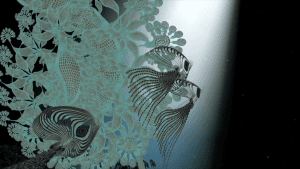
Yonder (2013) by Emilia Forstreuter | Forstreuter is interested in creating immersive experiences, moments of intimacy. How can one moment be stretched and feel very dense and rich? The Berlin artist refers to Yonder as a complex world created out of seemingly basic modules—cells—giving form to living feeling, one foreign and familiar.
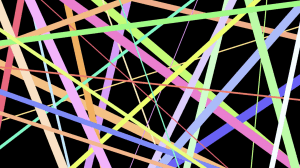
Grid (variation 2)(2021) by Ian Gouldstone | We use grids to try to divide up space and understand them better. Typically, they are comprised of two orthogonal sets of regularly repeating lines. Grid is a live simulation that asks how we understand space when those lines are neither regular nor orthogonal or static.
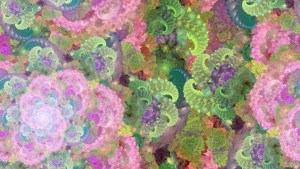
Evotree (2015) by Jonathan McCabe | In 1968 Aristid Lindenmayer introduced a model of plant development to the world. His “L-system” is a formal grammar, a language to describe branching growth. This “Evotree” is the expression of statements in such a language. It was grown from a single point through recursive substitution. The drawing technique is like “turtle graphics,” where a point is given instructions about where to move and what color to draw by the L-system.
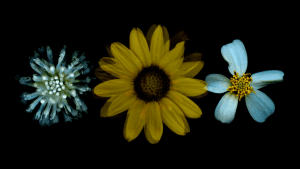
Asteraceae (2014) by David Montgomery | “Aster” deriving from the Greek word for star, asteraceae closely resemble the burning sun. Asteracea explores the symmetry of a life form and its energy source.
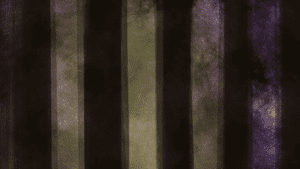
Atmospheric Reach (2021) by Brett Phares | Custom scene in game engine. Oriented to the sky above, the work underscores the act of looking up, of sensing color shifts behind a variable grid, to defy a vulnerable and limited reach.
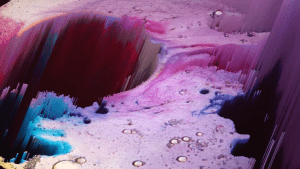
Overhead (2018-2021) by Hunter Scully | Overhead is an experimental video exploring colors through moving liquids that have been data-moshed to provide an interstellar atmospheric design. The visuals for this piece were created using water, alcohol, oil, food coloring, paint, glass, various soaps, and ice on an overhead projector that was documented by cameras. The eight hours of footage were sorted through for the best scenes and data-moshed to create “Overhead Colors.” The entire project took ten months to compose.

vitreous (2015) by Robert Seidel | vitreous was generated primarily through devising three-dimensional clusters of fibrous refractions and gravitationally lensing these different volumetric and chromatic densities. Singular elements gravitate towards each other, accumulating in a gigantic sculptural system, where each entity exists with its own visual axis and vanishing point. Luminous formations create prismatic interactions between ridges and plateaux of the main colors, which float in front of the infinite violet background.
